Online Edition:
April 2013
Vol. XIX, No. 2
Can Abstraction in Art Articulate the Central Mystery of Faith?
by Michael F. Tamara
There seems to be a certain leeriness instinctively felt by many of the Catholic faithful at the mention of abstraction in the context of sacred art and architecture. This is not surprising given the primarily secular connotation of the word to contemporary ears, which conjures thoughts of distortion or complete disregard for recognizable reality. The automatic equating of the word “abstraction” with such an idea, however, places a handicap on the understanding and perpetuation of Christian expression in the built environment, which has always relied on various degrees of abstraction in order to convey the mystery at the heart of the faith.
When dealing with eternal reality, which is itself an abstract notion because it escapes full human comprehension, the matter is not whether abstraction can call a person into an awareness of something more profound than the immediately apparent. The real question is what kind of abstraction best serves to bring the human mind and soul continually deeper into an understanding of its true identity, an understanding of the fullness of humanity.
The Relationship of the Human to the Divine
In order to answer the question of the nature of proper abstraction, we must first establish an accurate understanding of the relationship between the physical and spiritual dimensions of the Christian reality, by asking and answering an even more fundamental question: what is this fullness of humanity? When we say we believe in the resurrection of the body in the Apostle’s Creed, we acknowledge that not only do body and soul begin as a unified whole, but they are also, though separated at death, destined to be reunited on the day of judgment in imitation of Christ.1 In this manner, the human and the divine are inseparably linked.
If this is true, then our understandings of the nature of humanity and divinity are codependent. If we do not know ourselves, we cannot fully know God. And if we do not know God, then we cannot truly know ourselves and what it means to be fully human.
From the very beginning, the Church has taught that each and every human person is a sacred being created in the image and likeness of the Creator.2 We may liken the Lord’s original intent for mankind and the world — indeed, for reality in its totality — to a state of perpetual wholeness. Wholeness, as defined herein, simply refers to all parts being aware of — and working together in free obedience and acknowledgement of — the whole; living in harmony with God, each other, and all of nature.
Man’s eventual desire to be equal with God, and subsequent misuse of free will, caused a fragmentation of the whole, scattering the logic and simplicity of existence into scrambled incoherence.3 In simplest terms, the fullness of humanity was lost, and its void was filled by a broken and incomplete version of humanity.
Thus was put into motion salvation history, culminating in the coming of the Messiah. Whereas creation entailed the wrapping of humanity in a mantle of godliness, we can say that salvation was accomplished by the exact inverse: the gracious choice of God to be wrapped in a mantle of humanness in order to wash away sin and open the gates of heaven. Through the mystery of the hypostatic union4 — that is, the perfect union of both God and man in the person of Jesus Christ — the fullness of humanity was restored. As the Son of Man, He is the complete human: the Resurrection and the Life. His Resurrection in a glorified body foreshadows the destiny of all of His followers: body and soul reunited; the prevailing of wholeness once again.5
The Nature of Proper Abstraction
The various effective ways in which this mystery of the faith has been and continues to be conveyed in sacred art and architecture, all have a critical common starting point: they employ architecture and the arts at the complete service of faith, as opposed to trying to force the faith to submit to a predetermined and alien concept. That is, the designer and the artist who are successful at their endeavor do not begin with the popular temporal ideas of the day and then apply Christianity and the sacred liturgy where and if possible. They are not victims of their time. On the contrary, they prayerfully begin with contemplation of eternal Truth itself — the wholeness that has come into this world but is not of this world — and through all the God-given talent, materials, and tools at their disposal, find ways to portray its particular revealed elements in temporal language.
The constant problem that begs for a solution is how to properly serve as human imitators of the divine process of creation: a process that belongs solely to the infinite God but finds its expression and glorification through His finite children made in His image.6 How does one begin to display the transcendence between humanity and divinity? How can the soul be made to grasp the Lord of all longing Who is intangible yet paradoxically deigns to be made present on every altar in the world? The expression of this most awesome of mysteries — too big to explain with reason and natural representation alone — necessarily demands a certain philosophy of abstraction.
For the sake of identification, then, let us call the avenue by which this expression of transcendence is achieved transcendent abstraction. Abstraction that is transcendent takes familiar physical and architectural forms that are recognizably “human,” and transforms them only enough to allow them to become higher than themselves; to become glorified; to reach toward the divine. Transcendent abstraction is the way the built environment mimics human destiny, in that it begins with the natural and stretches it into the supernatural.
As early as the fourth century, we see transcendent abstraction already being employed. In the depiction of the Bearded Christ in the Catacombs of Commodilla outside of Rome [Figure 1], incredibly limited and primitive imagery is used to capture the entire essence of Jesus. In this fresco, the Alpha and Omega serve as bookends for the figure of Christ with a halo, thus combining His human appearance with symbols of the divine, making a concise visual representation of the hypostatic union. It may seem like a stretch to call this very elementary example “abstract,” but it goes beyond depicting Jesus simply as He appeared when He walked the earth, hence it alludes to a transcendent understanding — that is, an understanding beyond the plainly visible — of who Jesus really is.

Figure 1 – Bearded Christ, Catacombs of Commodilla, Rome.
PHOTO: Wikimedia Commons
SOURCE: http://en.wikipedia.org/wiki/File:Christ_with_beard.jpg
Later in the first millennium, we see the evolution of a style of transcendent abstraction called iconography. Icons take basic human forms — those of Christ or the saints — and show them not exactly as they appeared in life, but in the glorified heavenly state in which we believe they now dwell. In a typical icon, only visible body parts such as faces and hands are given depth with all other areas remaining flat. Drapery is often executed in a highly stylized fashion and heaven is simply represented by a solid gold background. One is meant to focus on the heads and faces, which is why light seems to emit from within the holy person in an icon rather than being cast upon from without [Figure 2].
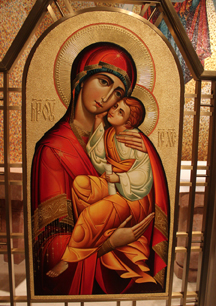
Figure 2 Theotokos, Twentieth century Byzantine style icon, Byzantine-Ruthenian Chapel, Basilica of the National Shrine of the Immaculate Conception, Washington, DC.
PHOTO: Michael Tamara
When we talk about a building, the bridge between the human and divine should be just as much of a concern as if we were talking about an actual depiction of a holy person. Sacred architecture should have human qualities that its beholders can subconsciously appreciate, and in turn offer back to God in the form of praise and thanksgiving. To find a clear illustration of this, the Gothic style is an excellent place to look because it emerged chiefly for the purpose of conveying man’s destiny for God.
When we look at the jamb figures of the Royal Portal at Chartres Cathedral [Figure 3], we see sculpture having become an organic part of the architecture in the form of various saints, angels, prophets, and other Old Testament figures welcoming all who enter. These figures are not naturalistic, earthly people, but transformed heavenly beings, “humanoid” in appearance as in the icon tradition. In this case, the primary method of transcendent abstraction is to take the body and actually stretch it, making the figure far too tall to be believable as naturalistic reality. This, coupled with the lightness of the drapery and the elevated placement of the sculptures, makes for a light, floating quality despite their material composition of stone.
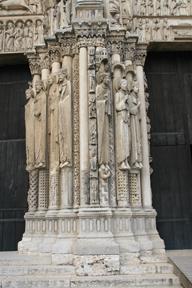
Figure 3 – Jamb Figures, West (Royal) Portal, Chartres Cathedral, Chartres, France.
PHOTO: Andreas F. Borchert
SOURCE: http://commons.wikimedia.org/wiki/File:Chartres_Cathedral_Royal_Portal_Statues_2_2007_08_31.jpg
This idea of vertical elongation extends into the structural architecture of the cathedrals themselves. The components of a column in the classical world — base, shaft, and capital — are very respectful of human proportions and sacred geometry based on the human body. The Gothic builders took the human-like qualities of the classical column and transformed them like the jamb figures, growing them ever higher and thinner in order to reach heaven [Figure 4].7 Here, what matters most are lightness, tallness, and brightness; taking the human and making it reach for the divine: transcendent abstraction par excellence that challenges previously held notions of a building’s limits by organically growing out of what was already familiar.
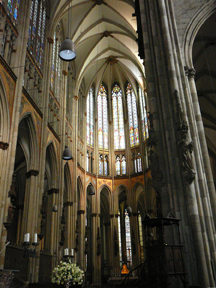
Figure 4 – Cologne Cathedral, Cologne, Germany.
PHOTO: Pascal Reusch
SOURCE: http://en.wikipedia.org/wiki/File:Cologne_Cathedral_interior.JPG
Seventeenth-century Baroque churches of the Counter-Reformation pushed limits in a different way. Architecture, painting, and sculpture morphed together into a single seamless gesamtkunstwerk, or total work of art in service of a reinvigorated annunciation of the Faith. Ceilings were ideal places for the expression of the big picture of human destiny, as can be seen in the Church of the Most Holy Name of Jesus, or Il Gesù, in Rome [Figure 5]. Here we see illustrated the epitome of the characteristically Baroque blurring of art and architecture to the point where we can’t tell where the architecture ends and the painting and sculpture begin.

Figure 5 – Triumph of the Holy Name of Jesus, Giovanni Battista Gaulli, Chiesa del Gesù, Rome.
PHOTO: Michael Tamara
Thanks to a masterful use of transcendent abstraction, we are less concerned with the actual shape of the ceiling than we are with what is going on in the center where it “broke open” to reveal heaven. Like the Gothic cathedral, we are called to a higher reality but in a very different way, thus illustrating the great diversity of expression afforded by the proper philosophy of abstraction.
Reveling in a Shattered Humanity
If eternal life is the destiny of humanity, then those of us in this earthly life are on a journey toward the complete realization of the wholeness restored by the Paschal sacrifice, but we have not yet arrived.8 When faith and reason are divorced, fragmentation easily eclipses wholeness once again. What the major secular forces at work over the past few centuries have in common, be they philosophical, socioeconomic, or political, is a general tendency toward — if not outright profession of — atheism.
Divinity has been gutted; humanity is all there is. The irony in this is that without God, there really is no such thing as innate human value: fullness of humanity cannot come from humanity and therefore cannot exist in a godless vacuum. The utter helplessness, anxiety, and fragmentation bred by this disconnection with our true identity have translated into the saluting of depression, hopelessness, and pointlessness, by putting them into artistic and built form.
If we call an abstraction that humanizes and tells the story at the heart of the faith transcendent, then an abstraction that dehumanizes and resists faith can be called fragmentary, because it is fundamentally disengaged from the larger understanding that human beings are made in the image and likeness of God, and are therefore destined to return to God. When man begins to believe sincerely that he is his own highest authority, reality becomes arbitrary and those with power can rewrite the rules endlessly to suit their whim.
What we’re calling “fragmentary abstraction,” here, is based on a view that accident, randomness, and coincidence represent the extent of the human condition, and that we need not be concerned with anything beyond what our senses are capable of perceiving — limited, in other words, to the material world of the immediate present. One example of this kind of abstraction expressed in architecture is the Guggenheim Museum in Bilbao, Spain [Figure 6]. Obviously this is a building that is entirely secular in purpose. But we might ask, if God is entirely absent, then where is humanity? What is the message conveyed by artistic abstraction entirely disengaged from the transcendent? Is it only “art for art’s sake”?
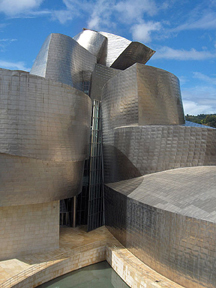
Figure 6 – Guggenheim Museum, Bilbao, Spain.
PHOTO: Georges Jansoone
SOURCE: http://commons.wikimedia.org/wiki/File:Bilbao.Guggenheim06.jpg
Although there are many examples of modern architecture worthy of admiration, much of it is characterized by detachment from any notion of the transcendent dimension of human experience, and deliberately disengaged from any humanizing forms or images. This “fragmented abstraction” must avoid any vestiges of the past; must exclude human history, for this reason: to incorporate the past might convey the idea that there exists a transcendent, objective truth — God — for which each of us must be willing to live and die.
The Consequences of Improper Abstraction
Since the Church — though not of the world — lives in the world, it is only logical that if allowed, this fragmentary thinking can enter through a crack in God’s temple, so to speak, despite the wholeness of the faith itself.9 For want of a more nuanced way of putting it, fragmentary abstraction simply seized upon twentieth- century opportunities to wedge its way into the Church: first in thought, and then, proceeding logically, in liturgy, sacred art, architecture, and music. It is not within the scope of this piece to analyze why or exactly how such a thing happened, but simply to point out that it did and to examine some of the physical consequences.
The puzzlement of many faithful at the appearance of much church architecture of the past half-century cannot be dismissed as resistance to change or nostalgia alone, but perhaps is due in part to the very pronounced difference between transcendent and fragmentary abstraction being played out in front of them. Fragmentary abstraction, let us recall, is skeptical of the revealed relationship between God and humanity in Scripture and Sacred Tradition, and instead finds the extent of reality in the minds of each individual. By nature then, it is often highly ambiguous.
Let us analyze this point by looking at a small and discreet parish church in Vienna, Austria. Built at the turn of the twenty-first century, it is called the Donau City Church, or the Church of Christ, Hope of the World [Figure 7]. The design is essentially a minimalist box, clad entirely in metal on the exterior and flush wood throughout the major surfaces of the interior. Light enters through countless small perforations in the walls, creating a distinctive effect and casting an ever-changing pattern of sun and shadows over the furnishings throughout the day.

Figure 7 – Church of Christ, Hope of the World (Donau City Church), Vienna, Austria.
PHOTO: Erich Schmid
SOURCE: http://commons.wikimedia.org/wiki/File:Donauscitykirche_innen.jpg
Is it an intriguing and memorable design? Certainly. Does it make a comfortable and inviting room? Perhaps. If this were a library, a living room, or a trendy restaurant, these questions alone might suffice. However, this building serves a holy purpose, immediately setting it apart and above the banality of everyday life. Ideally, one would expect it to announce itself as a clear witness to the one holy catholic and apostolic faith, serving as an inanimate teacher of her theological truths in addition to its utilitarian purpose of providing an enclosure for the exercise of her sacraments.
Alas, we find a prime example of the questions left unanswered by the use of fragmentary abstraction where transcendent abstraction is required. By doing a bit of research, one will find that there is actually some thoughtful consideration of Christian symbolism in the design. The window indentations in each of the four corners, for example, shape the ceiling and roof into a Greek cross. However, this is not readily experienced from the interior, because the indentations do not extend all the way down to the floor, and the layout of the plan itself deviates considerably from what can reasonably be called cruciform.
At its deepest identity, is this a Catholic church whose purpose is served well by being a minimalist box? Or is it firstly a minimalist box into which any program — in this case, the various elements of Catholic worship — can be secondarily inserted in whatever limited ways the primacy of the shell will allow? What is the universal story — literally, the catholic story — this space tells? How are we taught about the fullness of humanity we possess as children of God?
The particular manipulation of natural lighting conveys a certain sense of the spiritual. But spirituality alone, when divorced from theology, is an incredibly general and subjective thing. What we see is total spiritual otherworldliness enveloping the perimeter of the space — that is, the disembodied light peppering the walls — without that spirituality personifying itself in any universally understandable way. Is this adequate for the expression and glorification of the hypostatic union in which the great I AM is personified? Do we see a balanced expression of divinity and humanity?
An attempt at conveying the sacred simply by light and shapes is a theme that repeats through many other larger and more famous examples, one of which is the Church of God the Merciful Father, or Jubilee Church, in Rome [Figure 8]. Although light cascading downward over surfaces and the consequent shadows produced vaguely hint at the spiritual, there is no recognizably human dimension through the use of sacred imagery, proportionality, or significant material texture differentiation in the architecture itself.
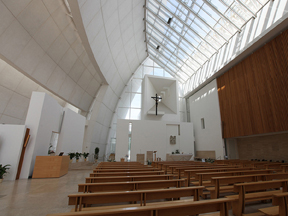
Figure 8 Church of God the Merciful Father (Jubilee Church), (2003) Tor Tre Teste, Rome.
PHOTO: Guarda Roma
SOURCE: http://www.guardaroma.it/la-chiesa-di-dio-padre-misericordioso.html
Aside from the dark traditional crucifix that sharply contrasts with the vast sea of mostly smooth whiteness, where do we see any other elements that call us into the appropriate frame of mind for the celebration of the sacred mysteries? Delete that crucifix and we could easily be looking at the interior of a large greenhouse, airport terminal, train station, or the atrium of an upscale shopping mall.
This certainly could not have been the effect intended by the architect, but the people in the pews do not know or care about academic explanations of why or how the building is sacred, and they shouldn’t need to if the architecture is successful at conveying the central mysteries of the faith. A truly Catholic place reveals to “little ones” the mysteries of the Kingdom,10 and needs no words to do so.
For example, it may not be immediately apparent that the three main curved walls to the left of the nave are intended to represent the Trinity. This is because, in the absence of even the slightest hint of traditional Trinitarian symbolism, their allusion to the Trinity is not necessarily obvious simply because of their number. After all, we could look at such buildings as the Sydney Opera House in Sydney, Australia, and see similar sail-like repetitions of three, but they obviously have nothing to do with the Trinity or any other theological idea.
Inside the nave of the Jubilee Church, what we see when we look up is worth comparing to what we see when we look up in another Roman church: Sant’Ignazio [Figure 9]. Which one of these most clearly tells of humanity’s new “lease on life” as a result of the Incarnation and God’s sacrifice for us? As in Il Gesù, the scene of the heavens opening in Sant’Ignazio is certainly not one you would see in nature, but it uses natural and recognizable elements in a new and different way in order to express the supernatural. Upon entering the Jubilee Church, we simply see the same thing we saw outside through glass and mullions.
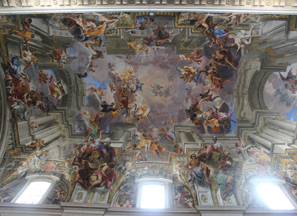
Figure 9 Apotheosis of St. Ignatius, Andrea Pozzo, Church of Sant’Ignazio, Rome.
PHOTO: Michael Tamara
Some would call this an unfair comparison given the radical difference in styles and materials, but what we’re talking about here is more fundamental than style or material. The Baroque ceiling could be replaced with any number of other styles — including modern — that are manipulated to convey the completeness of the Christian mystery. The comparison of these particular two churches is used simply because it epitomizes transcendent abstraction versus fragmentary abstraction as defined herein: in one, we see the supernatural whole; in the other — though the natural sky has an incredible beauty all its own — we nevertheless see only the literally visible piece of that whole.
The world contains an abundance of examples of both transcendent and fragmentary abstraction, and our purpose here has certainly not been to do an exhaustive account. Rather, the point is to distinguish between abstraction that submits to Truth in order to perceive the relationship between the visible and the invisible, and abstraction that exists for its own sake and is counterproductive to the purpose of Cath-olic architecture.
For all that we don’t know about God, there is plenty that we do know, not by virtue of our own senses or assumptions, but through the singular choice of that very God to reveal Himself to us throughout the ages in His Word and through the Magisterium of His Church. This is a truth our built environment should joyfully and articulately proclaim.
NOTES:
1 Catechism of the Catholic Church (CCC), 991.
6 Blessed Pope John Paul II. Letter of His Holiness Pope John Paul II to Artists, Easter Sunday, April 4, 1999. In section one of his letter, the Holy Father distinguishes between “creator” and “craftsman,” with the former title reserved for the Almighty alone, and the latter describing humans employing God-given talents and materials.
7 Fr. Robert Barron. Heaven in Stone and Glass: Experiencing the Spirituality of the Great Cathedrals, Crossroad Publishing Company, New York, 2000, page 79. Fr. Barron describes the effect of this upward stretching as “forc[ing] the visitors out of themselves, inviting them to transcendence.”
8 Peter Seewald. Light of the World, Ignatius Press, San Francisco, 2010, page 59. Pope Benedict XVI describes the persistence of man’s fallen nature in tension with Christ’s redemption: “Again and again man falls behind the faith and wants to be just himself again; he becomes a heathen in the most profound sense of the word. But again and again the divine presence in man becomes evident also. This is a struggle that passes through all of history.”
9 This is a paraphrase of Pope Paul VI’s assertion that “from some fissure the smoke of Satan has entered the temple of God” in a homily on the ninth anniversary of his pontificate, Feast of Ss. Peter and Paul, June 29, 1972.
***
Michael Tamara lives in Arlington, Virginia and is currently Director of Industry Relations at the American Institute of Architects in Washington, DC. He holds a BA in architectural studies and art history from Hobart College in Geneva, New York, and an M. Arch I from Syracuse University. He has studied in Rome and Florence. He is presently in the process of taking the Architect Registration Examination to become a licensed architect. This article is based on a paper presentation he delivered at the A Living Presence symposium on sacred architecture at the Catholic University of America in 2010.
***
*



